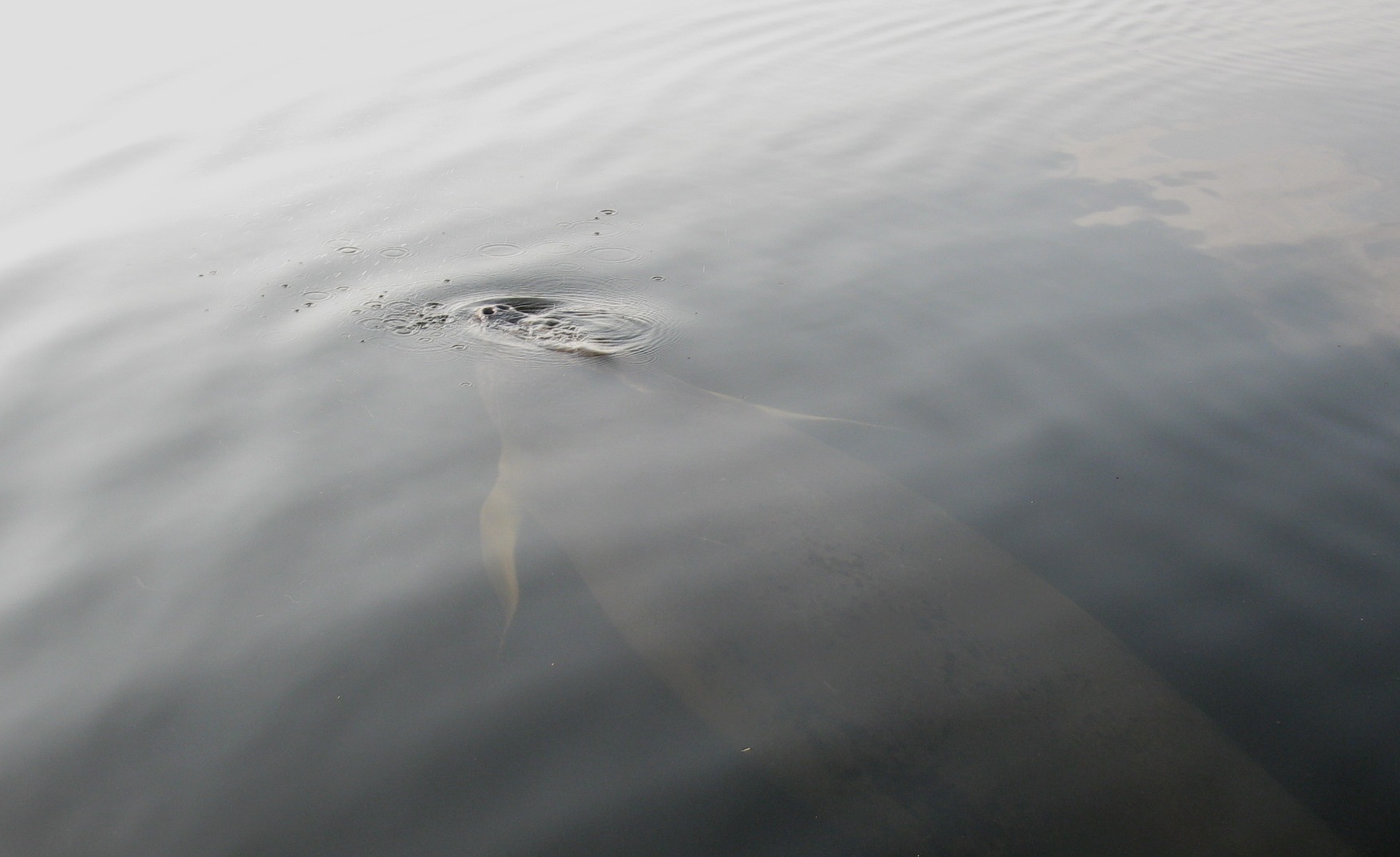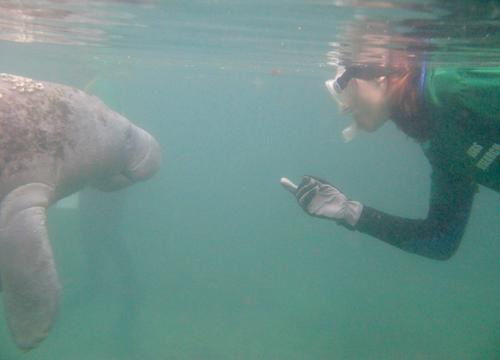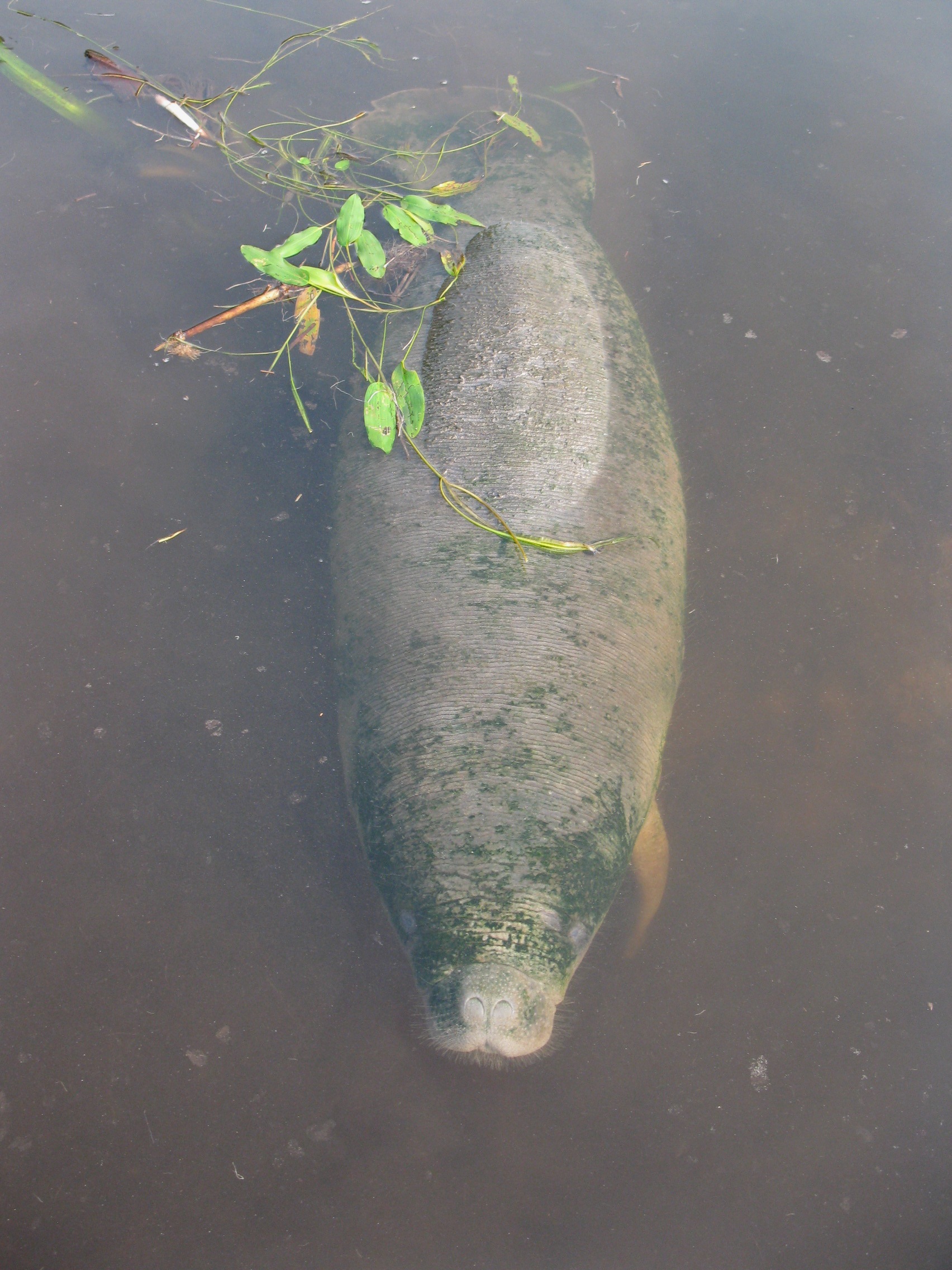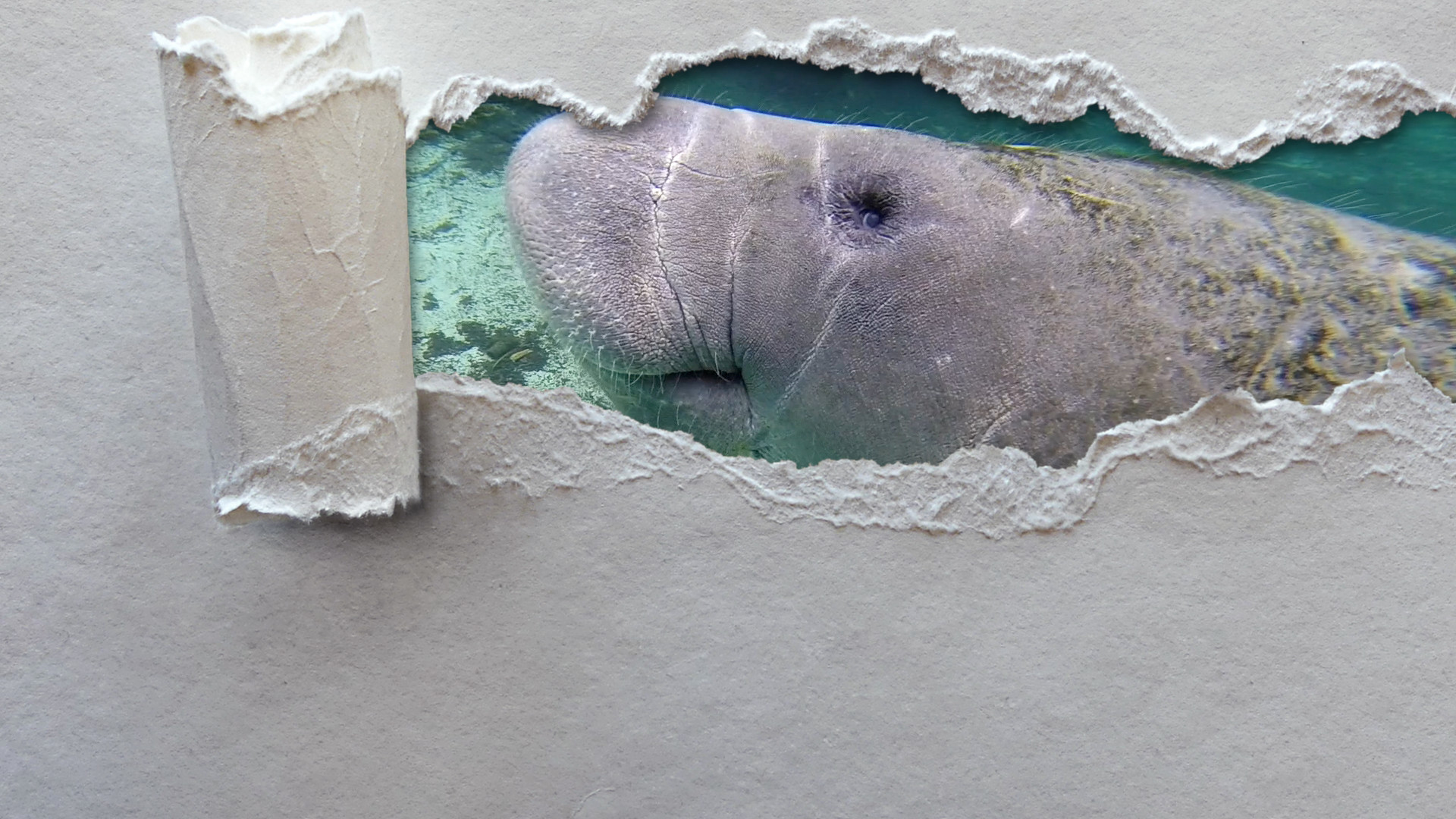Lucy Keith-Diagne has spent years searching for African manatees in stretches of river the color of chocolate milk. The task is urgent. In the 21 countries where they are found, these manatees — relatives of the species found in Florida — are at risk of poaching, being caught in fishing nets and becoming isolated when dams sever their habitat.
“I’ll be honest, I was a behavioral biologist when I started working in Africa, not a lab person,” says Keith-Diagne, executive director of the Senegal-based African Aquatic Conservation Fund. “But the manatee’s range in Africa is larger than the area of the United States. We need to figure out where they are sooner rather than later if we want to conserve this animal.”

Conservation relies on knowing what species are located where. That means identifying where vulnerable plants and animals are to protect them, and knowing where harmful, invasive plants and animals are to get rid of them. It’s hard to know where things are underwater, so conservation is always more complicated there.
To help study these species that are hard to see or otherwise observe, some scientists have turned to something called environmental DNA (or eDNA) — genetic material that’s been shed into the environment, often from fur, skin flakes, body fluids and feces.
Studying eDNA lets scientists peer into the depths of oceans, lakes and rivers. It also works on land, but that takes more effort. The scientists developing lab techniques for eDNA say it’s time to let it do the important work of finding out where things are — not just manatees in Africa, but a broad range of species with roles in a range of conservation issues.
But getting eDNA into the lab still isn’t easy. Right now scientists put most of their eDNA efforts into studying organisms in aquatic habitats because it’s easier to filter large quantities of water — typically several one-liter bottles at a time — to concentrate a few molecules of genetic material than it is to collect the same amount of genetic material on land. Once they have samples in the lab, scientists then use standard techniques to find and copy small amounts of DNA that match the genetic signatures of the target species.
From Theory to Application
Keith-Diagne thinks it’s time to put this technology to good use. She recently worked with Margaret Hunter, a U.S. Geological Survey research geneticist, and other scientists to create a laboratory test that uses eDNA to identify where manatees can be found. The group, led by Hunter, recently published a paper describing their technique in the journal Endangered Species Research.
“We’ve seen the need for additional conservation tools,” Hunter says. “Even though eDNA has been around for a while, it took us a bit to get to a place where a field biologist could take a sample and get good data from it.”

The need has never been more urgent, and not just in Africa.
The semi-recovery of the West Indian manatee species in Florida and Puerto Rico led to its Endangered Species Act listing being downgraded from “endangered” to “threatened.” But there are actually three species of manatees (one with a subspecies) found in shallow waters around both sides of the Atlantic Ocean basin, and some of them are found in the most remote regions of the world. The conservation status of manatees found outside the United States is, like the water they swim in, murky.
Manatees are on the brink of extinction in Jamaica and Haiti. Brazil considers the Antillean manatee subspecies to be its most endangered marine mammal. The status of manatees throughout their range in the Caribbean, Central and South America, in the Amazon River and in coastal and freshwater habitats in Africa is at best uncertain and, at worst, dire.
Keith-Diagne and other scientists in Africa spend a lot of time searching for manatees from boats to add scientific rigor to local knowledge about manatee habitat. Using eDNA could speed the process, but each sample requires a liter of water, and the water needs to be chilled to preserve the DNA. For their study, manatee researcher Aristide Kamla Takoukam flew from Cameroon to Hunter’s lab in Florida with several liters of water he collected.

From Manatees and Beyond
Hunter isn’t the only research geneticist who believes that we have entered the era where eDNA is an important wildlife research tool. Last fall Mark Stoeckle, a senior research associate in the Program for the Human Environment at The Rockefeller University in New York City, helped organize a conference at the university that brought together genetics researchers and wildlife managers to share breakthroughs and discuss the technique’s future.
The executive summary of the conference report was just four words: “eDNA works. Get going.”
“When we say ‘it’s time,’” Stoeckle says, “it’s because the technology has been proven in medicine and forensic science.” It’s also because getting the same information through other methods — such as hiring a fishing boat — is even more expensive and time consuming, he says.
Stoeckle developed a technique for finding the DNA of a single species in a sample of ocean water that he calls GoFish. The technique takes three days and costs about $15 to look for genetic material from a certain species, or a lab can test for two species for eight dollars more. He says the eDNA test could eventually be used as a more accurate way to protect spawning winter flounder from harbor dredging in the New York City area, where dredging is shut down for a fixed season. But, Stoeckle says, the test is still five years away from being accurate enough to do that.
One place that has eDNA testing down to a, well, science is the Whitney Genetics Lab at the U.S. Fish and Wildlife’s Midwest Fisheries Center in Onalaska, Wisconsin. The lab uses its own technique to process eDNA. It’s even faster than GoFish as it searches for the DNA of two species of invasive Asian carp — bighead carp and silver carp.
These invasive fish slurp down so much plankton and algae that there is little food left for young native species. The carp have already reduced native fish populations in the Mississippi River in the decades since their arrival. The U.S. Army Corps of Engineers, Fish and Wildlife Service and state wildlife agencies are taking expensive precautions to prevent invasive carp species from doing similar damage in the Great Lakes.
The Whitney Lab tests water samples from tributaries of all five Great Lakes and the Mississippi and Ohio River systems. The lab, with as many as nine scientists on staff, can process a group or “case” of 500 samples in two weeks, says Emy Monroe, the lab’s project leader. The lab needs to be that efficient because it analyzes up to 8,500 samples a year.
If the lab detects eDNA from an invasive carp species, and further eDNA tests confirm it, the finding can trigger a fleet of boats to search for and destroy the invasive fish.
But a lab like this does not spring up overnight. The original protocols it uses to analyze invasive carp DNA were developed by the University of Notre Dame in 2011, with funding from the Army Corps. The lab, which now has a $1.25 million annual budget, first started analyzing samples for Asian carp eDNA in 2013. Monroe says it tweaks its program each year to make the procedures more accurate and more efficient — for example, the six Fish and Wildlife field offices that contribute the eDNA put their water samples through a centrifuge before they are even sent to the lab. Nobody’s lugging gallons of water here.
“The take-home is that eDNA is powerful and useful, but it takes a lot of up-front testing and optimization to determine what methods work best for your particular study objectives,” Monroe says.
Keith-Diagne agrees. “Our paper showed that this technique is a little labor intensive, but it works,” she says of their manatee eDNA test.
It’s been a journey getting to this point, she admits. “When I first learned about eDNA, I naively thought that I could just go out to the river and scoop a cup of water and I was going to know how many manatees were there. That’s not where we are yet.”
Still, Keith-Diagne thinks we’ll see the easy-to-use eDNA tester of her dreams in the next 10 years, and that, she feels, could revolutionize a lot of conservation efforts — because she knows she’s not the only scientist who urgently needs to know what lives in the water.
![]()


